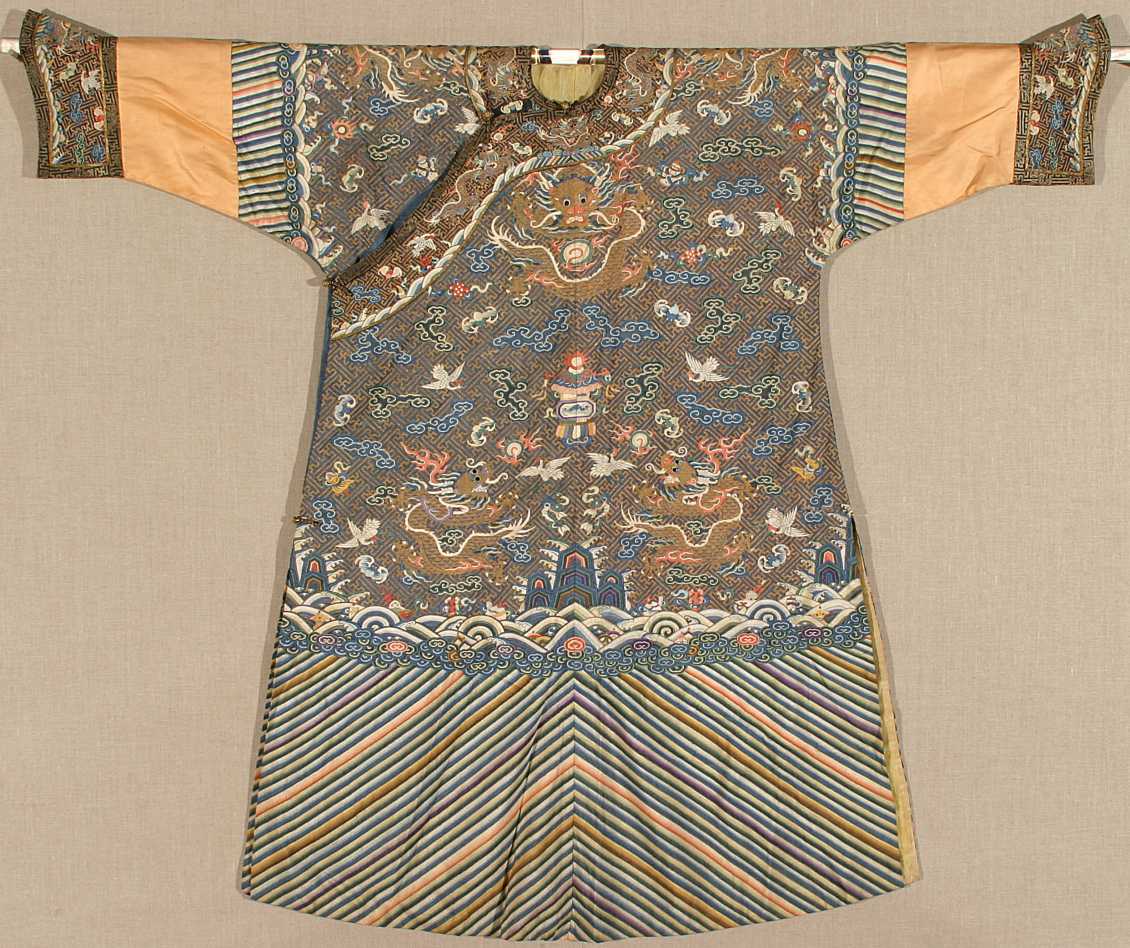Where Dragons Dwell: Symbols of Status in Clothing and Collecting
This installation presents Chinese and Japanese garments adorned with dragon designs that the wealthy elite would have worn or collected. In China, elaborate dragon robes with horse-hoof shaped cuffs were worn on semi-formal occasions by Qing dynasty emperors and members of the imperial court. Designs and colors were regulated by rank, and only the emperor who ruled from the “Dragon Throne”, heir apparent, empress, and empress dowager could wear yellow robes. In Japan, a high-ranking samurai warrior was entitled to wear a sleeveless jinbaori jacket over his armor as a display of status. Together with the painting Thick Clouds and Layered Peaks, the collective imagery shows that benevolent dragons were believed to ascend from the sea in springtime to inhabit clouds on mountains and bring the life-giving blessing of rain. When Chinese emperors and the elite could not travel to sacred peaks, they would make mental journeys by viewing mountain landscapes and contemplating mountain form rocks in their collections. The rock in this installation is reminiscent of a favorite rock in the collection of Emperor Huizong (1082 – 1135) known as the Dragon Rock.
Organized by the Norton Museum of Art. This exhibition was made possible by the generosity of John and Heidi Niblack.


